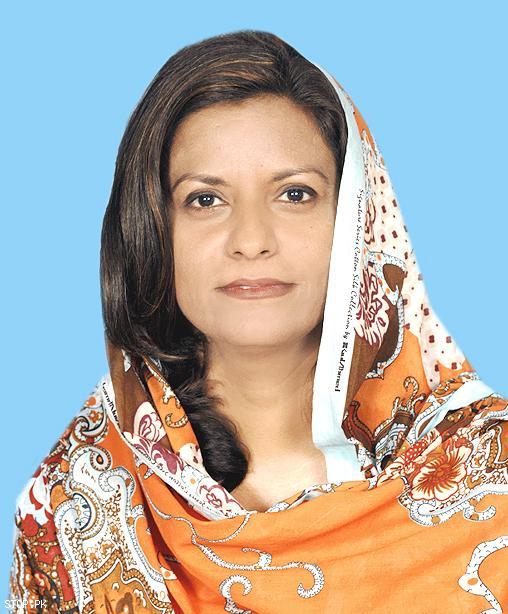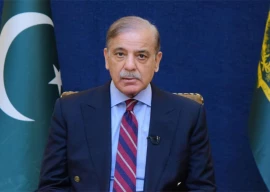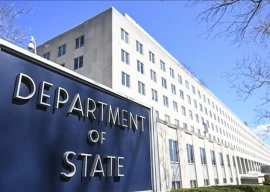
On a vibrant political landscape of Sindh, women politicians are taking the centre stage, actively engaging with their female voters, during the ongoing election campaigns.
Notable figures such as Nafisa Shah from Khairpur Mirs, Shazia Atta Marri from Sanghar, Faryal Talpur from Larkana, all of the Pakistan Peoples Party (PPP), besides Rahila Magsi of the Grand Democratic Alliance (GDA) from Tando Allahyar, Dr Fehmida Mirza from Badin, and Sahira Bano from Sanghar have emerged as influential contenders in their constituencies.
Dr Azrah Fazal Pechuho, Nazia Bhatti, Afroze Shoro, Sanam Talpur, and several others are also vying for victory in the 2024 general elections, specifically from districts in the mid and lower regions of Sindh, where tribal influences hold a lesser sway.
The focal points of interest for political analysts lie in the intriguing contests unfolding in Badin, Tando Allahyar, Sanghar, Khairpur, and Larkano.
Dr Mirza, a former National Assembly speaker, who secured victory in the last five general elections in Badin, finds herself in a precarious position this time. Despite being part of the federal government under the Pakistan Tehreek-e-Insaf (PTI), Dr Mirza has struggled to mobilise her supporters effectively.
Badin-based journalist Mohammad Suleman attributes Dr Mirza’s weakened position to a delayed entry in the electoral fray. Suleman suggests that the Mirza family’s historical connection with their supporters has been a key factor in their previous victories, and this time, the dynamics would have been different had they commenced their campaign from the outset.
“Despite her late arrival, she holds a grip in Badin’s politics,” he said, adding her husband Dr Zulfiqar Mirza, could change the whole scenario within a few days.
Another factor contributing to Dr Mirza’s vulnerability is the GDA’s election symbol, which she did not receive. Hence she is standing as an independent candidate under the symbol of airplane, which poses additional challenges.
Read also: Women on the ballot paper
According to district observers, PPP’s Haji Rasool Bux Chandio is in a favourable position in Badin, and a victory for him could mark the end of the Mirza family’s decades-long reign. Despite holding power for over two decades, the Mirza family’s stronghold appears to be slipping.
In Tando Allahyar, Rahila Magsi, credited with the district’s establishment in 2005 during Pervez Musharraf’s tenure, faces a tough challenge. Initially joining the Pakistan Muslim League-Quaid, Magsi later joined the PML-N in 2013 and became a senator in 2015.
After parting ways with the PML-N following the Senate elections, last year she joined the GDA and is contesting for NA-211 and PS-58. When contacted, analyst Ashfaq Laghari spoke of her weakened position in the current elections. “I do not see if she contests general election this time,” he said.
Despite Magsi’s historical ties with the MQM in the urban areas, Laghari suggested that she might struggle to attract voters this time, with PPP dominating the district government and influential personalities supporting PPP candidates. PPP’s Zulfiqar Sattar Bachani is considered a strong contender, but the battle for the seat is expected to be challenging.
Shazia Atta Marri, a former federal minister, who gained attention during the floods in her constituency, is challenging the GDA’s male candidate in Sanghar, while GDA’s Sahira Bano contests against PPP’s male candidate in the same district.
Both women are regarded as strong candidates, and their active engagement in their areas adds an interesting dynamic to the elections. Bano, who previously held a seat in the National Assembly on GDA’s women reserved seat, staunchly defends her party.
Analysts believe Marri could secure victory, but the spiritual connection of majority voters in her constituency with GDA’s head, Pir Pagaro, could impact the outcome. “It is an interesting election in this district and women politicians seem more active than male candidates,” commented Sanghar’s journalist Mohammad Ali.
Read: Call for 5% women representation
Marri’s direct connection, especially with women workers, is seen as a potential game-changer, making the election in this district particularly intriguing, with women politicians displaying more activity than their male counterparts.
In Larkana, a stronghold of the PPP, Faryal Talpur, the provincial president for the party’s women’s wing, is in a favourable position, according to local residents. With her traditional rival, Amir Bux Bhutto, not contesting, and the Abro family offering indirect support, Talpur appears poised for an easy victory.
Political analyst Sheeraz Shaikh suggests that only the JUI-F stands a chance to compete with her, emphasising Talpur’s strategic engagement with local leaders.
Unfortunately, the northern districts of Sindh witness limited participation from prominent women politicians. Jacobabad-based journalist Junaid Zulfiqar attributes this to the tribal belt’s dynamics, where women’s involvement is constrained.
Women activist Prof Arfana Mallah emphasises the unfavourable scenario for women politicians in Sindh, noting that political parties typically allocate seats based on quotas. She urges parties to encourage middle-class and women workers to actively contest elections, particularly in rural areas, where women voters participate more actively but receive less political attention.
Comparing the urban-rural situation, Prof Mallah points out that woman voters in rural areas participate more actively than their urban counterparts, yet receive less attention in politics.
Discussing the tribal districts of Sindh, including Ghotki, Jacobabad, Kashmore-Kandhkot, and Shikarpur, Prof Mallah notes that tribal chiefs and their male followers do not support any woman in these areas, making it almost impossible for women to contest elections independently.























COMMENTS
Comments are moderated and generally will be posted if they are on-topic and not abusive.
For more information, please see our Comments FAQ